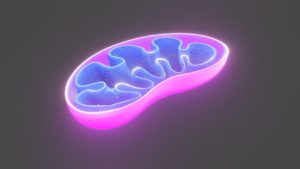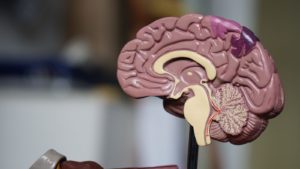Alzheimer’s disease is a devastating condition that affects millions of people worldwide. Is there a breakthrough in prevention that could potentially change the future of this debilitating disease?
Alzheimer’s disease is a progressive neurological disorder that primarily affects older adults, causing memory loss, cognitive decline, and eventually, the inability to carry out daily tasks. Currently, there is no cure for Alzheimer’s, and the available treatments only provide temporary relief. However, recent research and advancements in the field of neuroscience have raised hopes for a breakthrough in preventing this disease.
Prevention is always better than cure, especially when it comes to a complex disease like Alzheimer’s. With the increasing prevalence of this condition, scientists and medical professionals are tirelessly working to identify strategies and interventions that could potentially delay or even prevent the onset of Alzheimer’s. In this article, we will explore the latest breakthroughs in Alzheimer’s prevention and how they could potentially change the lives of millions of individuals and their families.


Learn about Dale Bredesen’s methods for preventing and treating Alzheimer’s Disease.
Dr. Dale Bredesen, a neurologist, specializes in treating Alzheimer’s. In 2014, he published a paper1 showing the effectiveness of lifestyle choices in preventing and treating this condition. By using 36 healthy lifestyle parameters, he reversed Alzheimer’s in 9 out of 10 patients.
The breaktrhrough preventention for Alzheimer disease with lifestyle choices: The approach included exercise, a ketogenic diet, optimizing vitamin D and other hormones, increasing sleep, meditation, detoxification, and eliminating gluten and processed foods.
Randomized Trial Launch
Additionally, the team has recently published a proof-of-concept paper and is currently initiating a randomized, controlled trial at six different locations: Hollywood, Florida; Nashville, Tennessee; Cleveland, Ohio; and Sacramento, Oakland, and San Francisco in California.
This trial will assess biological aging, brain aging, and epigenetics using newer blood tests, including phospho-tau 181, phospho-tau 217, A-beta 42 to 40 ratio, glial fibrillary acidic protein (GFAP), and neurofilament light polypeptide (NF-L), which were not available a few years ago.
Some of these are not yet available for purchase, but they are being researched and will eventually be available. Phospho-tau 181 and A-beta 42 to 40 ratio are currently available, providing an indication of one’s condition without the need for a PET scan.
Additionally, one can observe progress while taking measures to improve cognitive function. It is crucial to focus on prevention and reversing cognitive decline, which we were pioneers in achieving. Our observations consistently show that when individuals address the significant factors involved in the process, they experience reversal.
Valuable Tests
The GFAP test is not specific, but it can be useful. This test examines brain changes linked to astrocytosis. Astrocytes react to brain problems, so it can indicate an issue up to 10 years before symptoms appear. If the test is normal, it’s a positive sign. It is important to be aware of this information for the future.
The phospho-tau 181 and phospho-tau 217 tests are used to detect Alzheimer’s changes that lead to neuron death. Genetic testing is important to determine the number of APOE ε4 gene copies. Knowing your APOE status is crucial, according to Bredesen. Hormone testing and testing for toxins, such as mycotoxins and heavy metals, are also significant.
The presence of smoke often indicates the presence of fire
Accordingly, conventional wisdom holds that elevated tau and beta-amyloid cause Alzheimer’s disease. However, Bredesen’s research offers a different perspective on the matter. He provides an explanation:
The analogy used here is like suggesting that if we remove the smoke, the house won’t burn down. It doesn’t make sense. It’s important to understand that tau and beta-amyloid are reactions and facilitators. The focus on mitochondrial function is crucial, but there are other factors at play as well.
The cause of this disease is still unknown, and it is often believed that there are no preventions, reversals, or delays. However, this is not true. We have identified various factors, including damage to mitochondria and different infections, that contribute to the disease.
The research indicates that Alzheimer’s disease is primarily caused by a lack of support in the network of synapses in the brain. Factors such as inflammation, infections, insulin resistance, gastrointestinal issues, reduced blood flow, oxygenation, and mitochondrial function can all contribute.
The tau is pulled back, resulting in the enhanced effect. It amplifies the problem. Dr. Lee Hood and Dr. Nathan Price have published a book called ‘The Age of Scientific Wellness,’ where they explain that amyloid is a good biomarker but not a good target for treatment, which is what the data shows.
Lecanemab was recently recommended for FDA approval, but it only slows the decline by 27%. However, the panel failed to mention other treatments that may have performed better. Lecanemab does not improve your condition or maintain it, it simply slows down the decline.
The trials showed that ketones alone worked better than the drug. Additionally, extra virgin olive oil alone was more effective than the drug in a trial. Furthermore, combined metabolic activators such as carnitine, nicotinamide, and riboside also showed improved results. These findings support the importance of energetics and inflammation in the equation.
The protocol we developed has proven to be highly effective, with individuals maintaining their improvement for over 10 years. It is unfortunate that this drug has been suggested for approval.
There are two important causative factors that need to be addressed
According to Bredesen, supporting energy and reducing inflammation in the brain are considered the two most crucial factors in preventing and treating Alzheimer’s. These are basic principles that all of Bredesen’s patients incorporate.
According to Bredesen, a dietary intervention called KetoFLEX 12/3 has shown the best results for brain health. This plant-rich, mildly ketogenic diet recommends avoiding dairy, grains, and simple carbs while maintaining a good omega-3 to omega-6 ratio. To assist in following this diet, Nutrition for Longevity now provides meal kits available at KetoFlex123.com.
During the interview, I addressed some of Bredesen’s dietary recommendations, specifically his continued support for polyunsaturated fats (PUFAs).
There is evidence suggesting that maintaining low levels of omega-6 PUFAs, specifically below 2% or even 1% of daily calories, may be beneficial for overall health. Additionally, there is a possibility that individuals with dementia may need even more caution, as the PUFA linoleic acid (LA) seems be the primary dietary source of various factors associated with Alzheimer’s disease, such as inflammation, oxidative stress, mitochondrial dysfunction, and impaired ATP production.
For more information on this topic, please listen to the interview and/or review “Linoleic Acid – The Most Destructive Ingredient in Your Diet,” which covers the details extensively.
Additionally, there is uncertainty regarding the effectiveness of the omega-3 to omega-6 ratio as commonly believed, as increasing omega-3 intake does not necessarily counteract the negative effects of omega-6 fats. Furthermore, many omega-3 supplements, particularly those derived from fish oil, are of low quality and may be synthetic and rancid. Therefore, ensuring the consumption of high-quality omega-3 is crucial.
Bredesen is observing positive outcomes with the use of KAATSU (blood flow restriction training) and exercise with oxygen therapy (EWOT).
Sleep apnea is a commonly recognized issue that has been found to have a negative impact on cognitive function. It restricts oxygen supply to the brain and increases adrenaline levels during sleep.
According to Bredesen, sleep is a significant aspect to consider. The first patient we treated in 2012 successfully reversed her cognitive decline and continues to thrive. She is currently in her late 70’s and has been following this approach for over a decade.
One of her issues was poor sleep. It was addressed by ensuring she gets at least an hour of deep sleep and an hour and a half of REM sleep. Poor sleep increases amyloid levels, which is a marker of negative things. Unfortunately, amyloid also leads to even poorer sleep.
Stress reduction, reduce stress in your daily life.
Brain training, train your brain and keep your brain cells.
Detox and detox your liver. Let your liver regenerate and detoxify your body.
Targeted supplements, for targeted general health and wellbeing.
Bredesen’s program includes customized treatment for each patient. Some patients have undiagnosed chronic infections that require attention. Examples of common infections include P. gingivalis and T. denticola, which can enter the brain from the oral microbiome, as well as herpes simplex and human betaherpesvirus 6A (HHV-6A).
The entire family of herpes viruses is linked with brain and neuronal changes. HHV-6A specifically is connected to the brain degeneration observed in Alzheimer’s disease. Chlamydia pneumoniae and tick-borne infections, including Borrelia, Bartonella, Babesia, and Anaplasma, are also significant concerns.
These infections cause an activation of the innate immune system that needs to be controlled. According to Bredesen, both COVID-19 and Alzheimer’s are mismatches between the innate and adaptive immune systems. The pathogen is not being cleared, resulting in a continuous release of cytokines. In the case of COVID, death occurs from an acute cytokine storm, while in Alzheimer’s, death occurs from a chronic cytokine issue. Bredesen describes it as a long-term problem with cytokines.
The consumption of high-fructose corn syrup has been found to decrease ATP production
Dr. Richard Johnson, Bredesen, and other coauthors published a paper in March 2023 on Alzheimer’s disease. The paper suggests that Alzheimer’s is a result of fructose and uric acid metabolism in the brain. Bredesen emphasizes the importance of avoiding fructose.
Rick Johnson’s research focuses on mitochondrial function and damage. He emphasizes the significance of a signal change caused by fructose intake. This signal prompts the body to store fat and reduce ATP levels by approximately 15%.
When there is a lack of energy, reducing ATP by 15% is not desirable and is linked to cognitive decline.
Rick conducted a comprehensive analysis of relationships, PET scan changes, and blood biomarker changes. In each instance, the effects of fructose mirror those observed in Alzheimer’s disease.
The critical aspect of energetics is related to the consumption of fructose and high fructose corn syrup. It is advised to avoid excessive intake of these substances, although moderate consumption of fruits is still acceptable.
You can support your energy with Protandim Nrf1 Synergizer.
Protandim:
Nrf1 Synergizer
Protandim® NRF1 Synergizer™ harnesses the youthful energy of mitochondria to boost brain health and cognitive performance.*
Comparing Fruit and High-Fructose Corn Syrup
There is a difference between fructose from fruit and high-fructose corn syrup. I used to suggest limiting both, but now I have changed my thinking. Fructose from fruit activates pyruvic dehydrogenase, which is needed to metabolize glucose. If the enzyme is not activated, the glucose cannot be used for fuel.
The Randle Cycle is a metabolic switch that determines which fuel your cells burn. It can be influenced by your diet, specifically the amount of fat you consume. If your diet is over 30% to 35% fat, the switch shifts to fat metabolism. This means your cells will burn fat in your mitochondria instead of glucose. The excess glucose is sent to glycolysis and released into your blood.
Consuming a large amount of fruit and fat together is not advisable. The issue lies not solely with fructose itself, but with consuming excessive amounts of fructose and fat together. If you increase your intake of fresh fruit, you must also reduce your intake of fat, otherwise the sugar cannot be properly utilized as fuel.
In addition, there are variations in metabolic flexibility, toxicity, and microbiome that may play a role in an individual’s ability to tolerate higher carbohydrate intake.
PUFAs also seem capable of inducing torpor, similar in effect as high-fructose corn syrup. This leads me suspect that ripe fruit is not a significant factor in dementia. In a previous interview, Johnson expressed surprise that fructose from fruit does not have the same effects as high-fructose corn syrup. Bredesen responds:
It is logical that we, as frugivores, are descended from frugivores. However, the fruit we consume today has a higher sugar content due to breeding. This is the problem. On the positive side, the fruit still contains beneficial fiber and does not have the negative effects of high fructose corn syrup and processed foods.
Concluding: Breakthrough Prevention For Alzheimer Disease
As an Activated Living coach, I am excited to share with you the breakthrough prevention approach for Alzheimer’s disease through lifestyle choices. It is crucial to understand that our daily habits and choices can significantly impact our brain health. By adopting specific practices and making conscious changes to our lifestyle, we can enhance our brain function and reduce the risk of developing Alzheimer’s disease.
One of the key components of this prevention approach is exercise. Regular physical activity has been shown to have numerous benefits for the brain. It increases blood flow to the brain, promotes the growth of new brain cells, and improves memory and cognitive function. Engaging in activities such as walking, jogging, dancing, or even gardening can have a profound impact on brain health.
Another essential aspect is following a ketogenic diet. This low-carbohydrate, high-fat diet has shown promising results in preventing and even reversing cognitive decline. By reducing carbohydrate intake and increasing healthy fats, the brain can utilize ketones as an alternative energy source, providing it with the necessary fuel for optimal function.
Optimizing vitamin D and other hormones is also crucial for brain health. Vitamin D deficiency has been linked to an increased risk of cognitive decline and Alzheimer’s disease. By ensuring adequate sun exposure or supplementing with vitamin D, we can support our brain’s health and overall well-being. Additionally, balancing other hormones such as estrogen, testosterone, and thyroid hormones can have a positive impact on cognitive function.
Increasing sleep quality and quantity is another essential component. During sleep, the brain undergoes crucial processes that consolidate memories, repair and regenerate cells, and remove toxins. By prioritizing a good night’s sleep and implementing healthy sleep habits, we can support our brain’s ability to function optimally.
Meditation is a powerful practice that has been shown to reduce stress, improve focus, and promote overall brain health. By incorporating daily meditation into our routine, we can enhance our cognitive abilities and reduce the risk of cognitive decline.
Detoxification is also a critical aspect of this prevention approach. By reducing exposure to toxins and supporting the body’s natural detoxification pathways, we can minimize the accumulation of harmful substances in the brain, reducing the risk of cognitive decline.
Lastly, eliminating gluten and processed foods from our diet is essential. Gluten and processed foods have been linked to inflammation in the body, including the brain. By adopting a whole foods-based diet and avoiding processed and inflammatory foods, we can support brain health and reduce the risk of Alzheimer’s disease.
In conclusion, the breakthrough prevention approach for Alzheimer’s disease with lifestyle choices is a comprehensive and holistic approach. By incorporating exercise, a ketogenic diet, optimizing vitamin D and other hormones, increasing sleep, meditation, detoxification, and eliminating gluten and processed foods, we can significantly reduce the risk of developing Alzheimer’s disease and enhance our brain health. As an Activated Living coach, I am here to support and guide you on this journey towards a healthier brain and a more vibrant life.
How we activate your health with coaching a natural approach
Yes, … there is a way to naturally repair your body on a cellular level… through activating your body to do what it is supposed to. This is not supplementation, it’s activation! Start your Activated Living today. The Little Yellow Activator reduces oxidative stress by an average of 40% in 30 days and increases glutathione by approximately 300% in 120 days.* Protandim Nrf2 Synergizer is a daily food supplement that supports cellular health and well-being. To order LifeVantage products, visit our webshop.



